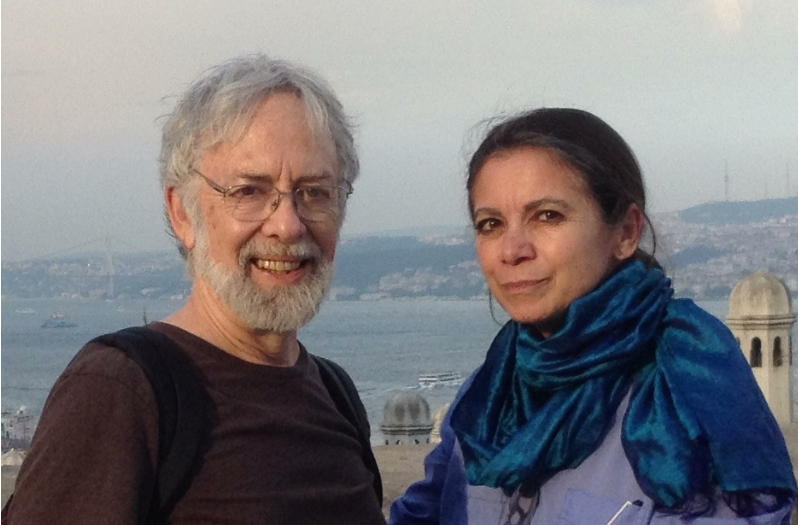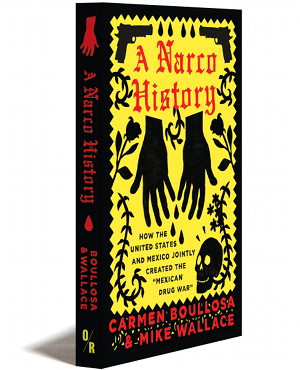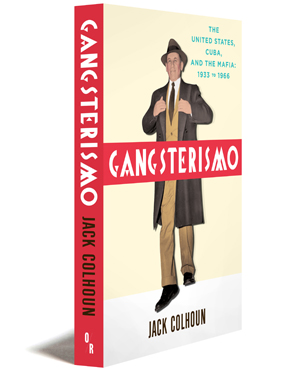A Narco History
HOW THE UNITED STATES AND MEXICO JOINTLY CREATED THE "MEXICAN DRUG WAR"
CARMEN BOULLOSA and MIKE WALLACE
"A well-written chronicle of interconnected events that blur borders and cultures–a splendid introduction to a tragic, complex and fascinating binational drama." —Sergio Aguayo, professor, El Colegio de Mexico; visiting professor, Harvard University
TweetBuy This Book
About the Book
The term “Mexican Drug War” misleads. It implies that the ongoing bloodbath, which has now killed well over 100,000 people, is an internal Mexican affair.
But this diverts attention from the U.S. role in creating and sustaining the carnage. It’s not just that Americans buy drugs from, and sell weapons to, Mexico’s murderous cartels. It’s that ever since the U.S. prohibited the use and sale of drugs in the early 1900s, it has pressured Mexico into acting as its border enforcer—with increasingly deadly consequences.
Mexico was not a helpless victim. Powerful forces within the country profited hugely from supplying Americans with what their government forbade them. But the policies that spawned the drug war have proved disastrous for both countries.
Written by two award-winning authors, one American and the other Mexican, A Narco History reviews the interlocking twentieth-century histories that produced this twenty-first century calamity, and proposes how to end it.
258 pages • paperback • ISBN 978-1-939293-79-4 • E-book 978-1-939293-80-0
About the Authors

Carmen Boullosa has published fifteen novels, most recently Tejas, La virgen y el violín, El complot de los románticos and Las paredes hablan. Her novels in English translation are Texas: The Great Theft; They’re Cows, We’re Pigs; Leaving Tabasco and Cleopatra Dismounts. She has received the Xavier Villaurrutia Prize in Mexico, the Anna Seghers and Liberaturpreis in Germany, and the Café Gijón Prize in Madrid. She is a member of Mexico’s Sistema Nacional de Creadores.
Mike Wallace, Distinguished Professor of History at John Jay College of Criminal Justice of the City University of New York and the CUNY Graduate Center, and founder of the Gotham Center for New York City History, won the Pulitzer Prize for History for his book Gotham: A History of New York City to 1898 (Oxford University Press), co-written with Edwin Burrows. He is a co-founder of the Radical History Review and author of the essay collection Mickey Mouse History (1996).
Read an Excerpt
From A Narco History
Ayotzinapa is a small village, located near the town of Tixtla, in a remote and mountainous region of Guerrero, a state in the south of Mexico. Though best known in the U.S. for its Pacific coast port city of Acapulco, a famed tourist resort since the 1950s and 1960s when stars like John Wayne, Elizabeth Taylor, Frank Sinatra, and Lana Turner flocked there, Guerrero is a poor state, and Ayotzinapa lies in one of its poorest regions.
The village is built around a teacher training school. Its construction dates to 1933, when a colonial-era hacienda was transformed into an institution that aimed to educate the isolated, low-income population of rural Mexico. It was one of a network of “normal schools” imbued with a vision of social justice rooted in the Mexican Revolution (1910-1920). These schools were tasked with educating their students in both literacy and politics: ultimately in creating students who could transform their society. Ayotzinapa’s alumni include two 1950s graduates — Lucio Cabañas and Genaro Vázquez — who became famous leaders of agrarian guerilla insurgencies during the 1960s and 1970s. The school today celebrates this tradition. Its buildings feature murals of Marx and Che and its entryway bears the inscription: “To our fallen comrades, who were not buried, but seeded, to make freedom flourish.”
Much of the radical energy of the 522 students (all male, between eighteen to twenty-four years old, many of Indian descent) goes into preserving the school itself. It has been widely believed that the authorities want to shut it down, along with the other sixteen rural teachers’ schools, despite the fact that roughly a fifth of Guerrero’s 3.4 million citizens do not know how to read or write. Students are given one peso a day (about seven U.S. cents) for their personal expenses, and the funds allotted for meals and housing are skimpy. To survive, the students grow much of their own food, raise chickens, look after dilapidated buildings, and share bare rooms containing more occupants than beds.
Periodically they head into nearby cities and towns to botear—or “pass the can”—to raise money for the school. They also hold demonstrations to push for more funding, and for the creation of more jobs for those who obtain their degree. In 2014, allotments were trending down, and the students were up in arms. “If we don’t demand things, nothing comes,” said one nineteen-year-old student. “We just get leftovers.”
Occasionally they have “borrowed”—forcibly commandeered—commercial buses from national companies. The state doesn’t provide enough vehicles, and it’s a long walk to the schools in remote hill towns where they do their practice teaching, or to the cities where they go to fundraise or demonstrate. More aggressively, they have used the buses to blockade tollbooths along the superhighway that runs from Acapulco north to Mexico City, the nation’s capital; at these temporary barriers they chant protest slogans and demand contributions from infuriated drivers. As these buses (and their drivers) have always been returned, the authorities, to the annoyance of the companies, have basically tolerated the practice.
On Friday afternoon, September 26, 2014, at the end of the second week of classes, roughly a hundred students—almost all freshmen—went on an expedition. Details of the trip’s purpose, its progress, and even its horrific outcome are still unclear, which is amazing considering the national, indeed global attention that has been riveted on it. Nearly every aspect of what happened that day is contested—partly due to the usual Rashomon effect of contradictory witness accounts, partly due to incompetence, corruption, and lies. There is no easy-to-follow account of what happened to those students during that day—particularly to forty-three of them—but the following narrative is our best effort, using the latest (and often conflicting) accounts available at the time of writing, to lay out what happened.
….
….The mayor and his wife were not people to trifle with. Iguala Mayor José Luis Abarca was closely linked to a violent drug trafficking gang, the Guerreros Unidos (United Warriors), which had been a military arm of the once powerful Beltrán Leyva Organization. When the latter collapsed in 2009, leaving the Guerreros to their own devices, they took over the production and processing of opium paste (the base for making heroin), and shipped it directly to Chicago, secreted in commercial passenger buses. The Guerreros Unidos supplemented this income stream with collateral criminality, notably kidnapping and extortion, both in Iguala itself — where they were notorious for donning masks at night and grabbing people on the street and giving them an hour to come up with $1000 — and throughout Guerrero. They also did battle with other fragments of the progenitor Beltrán Leyva cartel, notably a gang called Los Rojos (the Reds), for control of the drug trafficking business in Guerrero. Their incessant shootouts, which filled mass graves in the countryside, helped drive the state’s murder rate to 63 for every 100,000 inhabitants, approaching that of Honduras, the homicide capital of the world.
Abarca’s principal connection to the Guerreros came courtesy of his wife, María de los Ángeles Pineda Villa. Pineda came from a family of drug dealers – her father and three brothers had worked with the Beltrán Leyva Organization in its heyday, then became Guerrero warriors (two brothers died in battle in 2009). Federal police opened a case against María de los Ángeles herself in 2010 for “delitos contra la salud” (drug-trade related crimes), but dropped it for reasons unknown.
Abarca had started his business career as a sandal salesman in the local market, but had a meteoric rise. Using mysteriously assembled funds, he became a major property owner, acquiring real estate, jewelry stores, and a shopping mall (the land for which was donated by the Ministry of Defense after intense lobbying on Abarca’s behalf by officials of Guerrero state). He snared the mayoralty in 2012, despite warnings that putting him in office meant turning the city over to organized crime. (One of those protestors was found dead a few weeks after Abarca assumed office). The new mayor proceeded to stuff eleven relatives onto the city payroll. He made his cousin Felipe Flores chief of police, and it was generally believed that the department was now a de facto branch of the Guerreros Unidos, who in addition to extorting the citizenry, used Iguala as a base for their drug trafficking, and provided the mayor with muscle when needed.
In May 2013, Abarca had turned them loose on local activist Arturo Hernández Cardona, who had led a demonstration in Iguala by aggrieved farmers and miners. According to witnesses, Abarca arranged the kidnapping and torture of Hernández Cardona, and then showed up personally to inform the victim “You fucked with me, so I will have the pleasure of killing you,” just before shot gunning him to death. The Ayotzinapans, who had had close ties with Hernández Cardona, demonstrated in front of town hall. The local Catholic bishop, Raul Vera, called for an investigation into the killings. He even took the case to human rights organizations in the U.S.—but the authorities decided the mayor was constitutionally immune from prosecution, and nothing was done. Impunity had been formalized. “Butchers have come into power,” Bishop Vera said, and indeed it is very hard to discern where the state ends and the criminals begin.
It is even harder in the case of the mayor’s wife. When she and her husband came to municipal power in 2012, it was María de los Angeles herself who, according to one of the gang’s leaders, became Iguala’s “key operator,” the organizer of the city’s dark side. In her daylight role as first lady, however, Pineda loved to play Lady Bountiful. She had endless photos taken of herself posing with the beneficiaries of her benevolence. And on September 26, 2014, she was due to give her annual report as president of the local chapter of a National System for Integral Family Development, a state funded organization. According to many observers, she also intended to use the occasion to launch a campaign to succeed her husband as mayor. The ceremony, held in the downtown Civic Plaza, was to be followed by an open-air party. To ensure an imposing audience, they brought in 4000 acarreados, poor people rewarded for attending and applauding. This gathering was in full swing when word arrived that Ayotzinapa students were once again in town, possibly intent on ruining her big day. The imperious first lady—stylistically a cross between Marie Antoinette and Maleficent (the Disney villain)—spewed abuse about the students, with whom she had crossed swords before: “filthy,” “criminals,” “hustlers,” “profiteers” were among the sputtered adjectives. Then either she or the mayor gave the order to “Stop them, contain them, and teach them a lesson.”
Meanwhile, back at the terminal, the massed 100 students discarded the bus with broken windows, and commandeered two new ones. Sure that the police would be back, they decided to get out of town as fast as possible. The caravan of now four buses proceeded north on a main north-south street, through thickening traffic, heading straight for the Civic Plaza. It seems like they intended to make a right turn just before it, and head east to an entrance to the periférico, the circumferential highway that would take them back to Ayotzinapa. Only one bus was able to do so before police cars began pouring into the area. The remaining three vehicles had no choice but to plow straight ahead, past the Plaza, where the event was just breaking up, and make for another entrance to the highway. The police gave chase, running behind and alongside them, shooting in the air, until other patrol cars cut in ahead of the procession, just before the on-ramp, forming a barricade, and boxing in the three buses.
Then they began shooting to kill.
In the Media
- “Insightful political contextualization.” A NARCO HISTORY in PUBLIC BOOKS (2/21/2017)
- “A Narco History on CNN Mexico” CARMEN BOULLOSA and MIKE WALLACE on CNN (8/16/2016)
- “Narco Politics: the Political Economy of the Drug War” CARMEN BOULLOSA and MIKE WALLACE reviewed by CounterPunch (7/13/2016)
- “Timely, insightful, and passionately argued” CARMEN BOULLOSA and MIKE WALLACE reviewed in Los Angeles Review of Books (5/17/2016)
- MIKE WALLACE and CARMEN BOULLOSA interviewed on The Real News Network (1/28/2016)
- Let Them Talk interviews authors of A NARCO HISTORY (12/14/2015)
- A NARCO HISTORY praised in Broken Pencil Magazine (11/20/2015)
- Business Insider excerpts A NARCO HISTORY (9/15/2015)
- CARMEN BOULLOSA and MIKE WALLACE interviewed on This Is Hell! (7/6/2015)
- “[A] valuable overview” Nomadic Press highlights the usefulness of A NARCO HISTORY (6/9/2015)
- “Ornate in detail yet refreshingly concise” LA Times reviews A NARCO HISTORY (6/4/2015)
- In Al Jazeera, Belen Fernandez highlights the importance of A NARCO HISTORY (5/28/2015)
- Publishers Weekly lauds A NARCO HISTORY for being “meticulously researched and lucidly organized.” (4/30/2015)
- NARCO HISTORY authors CARMEN BOULLOSA and MIKE WALLACE discuss their book on the Majority Report (4/28/2015)
- MIKE WALLACE and CARMEN BOULLOSA respond to Manuel Suarez on InSight Crime (4/14/2015)
- “There is no silver bullet that can magically resolve the drug war in Mexico.” Michael Wallace speaks to InSight Crime about A NARCO HISTORY (4/6/2015)
- A NARCO HISTORY excerpted in Truthdig (3/16/2015)
- A NARCO HISTORY excerpted in Jacobin (3/16/2015)






